Lake Titicaca Islands and Homestay
On the 23rd we took the Inka Express Bus from Cusco to Puno for 10 hours. Look for a post on that later. We met up with our Gap Adventures representative at our hotel, Balsa Inn, to go over the details of our Lake Titicaca Islands tour and Homestay.
The next morning we were picked up at 8am to go the Puno’s harbor. We met up with the rest of our group, about 12 people who were on a longer Gap Adventures tour. We bought gifts of rice and cooking oil for our homestay families, and boarded the boat. The boat was much nicer than I expected, it was completely enclosed with a roof and windows, and it had comfy reclining chairs.
Lake Titicaca is on the border of Peru and Bolivia. About 60% of the lake is in Peru and the rest is in Bolivia. It is the largest lake in South America, and the highest navigable body of water in the world at 12,507 feet above sea level. The lake is huge, with a surface area of 3,232 square miles. When you look across its waters it’s like looking across the ocean.
The name means grey (kaka) puma (titi) in the local language because the outline of the lake looks like a puma chasing a rabbit. However, if you say it wrong you’re saying puma poop.
Our first stop on the tour was the Uros Floating Islands. These islands are made completely of the reeds that grow in the lake and are anchored down with big sticks. As one islander said, you have to anchor your island, otherwise you might float into Bolivia. Also, if you don’t like your neighbor, you can just unanchor and float somewhere else!
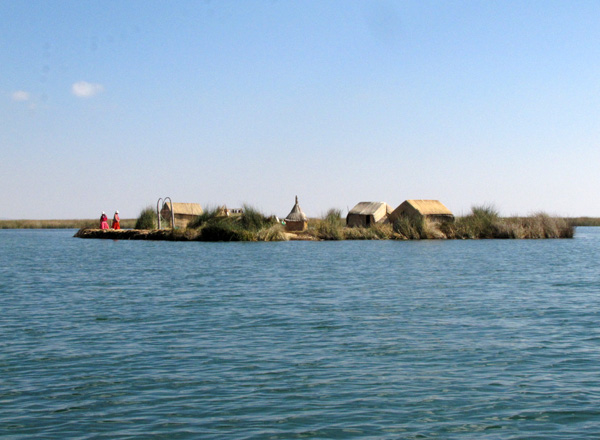
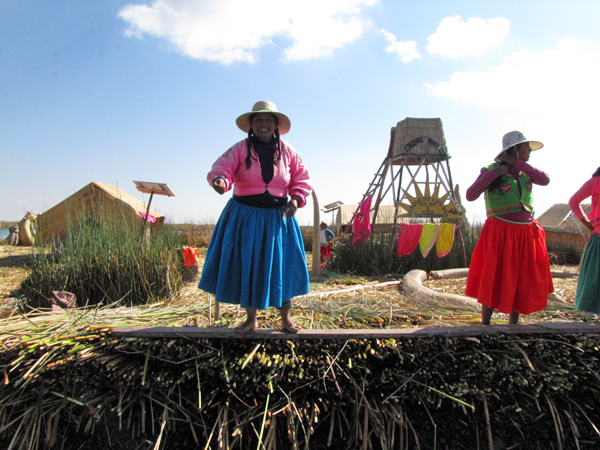
Stepping on the island feels a bit like walking on a waterbed.
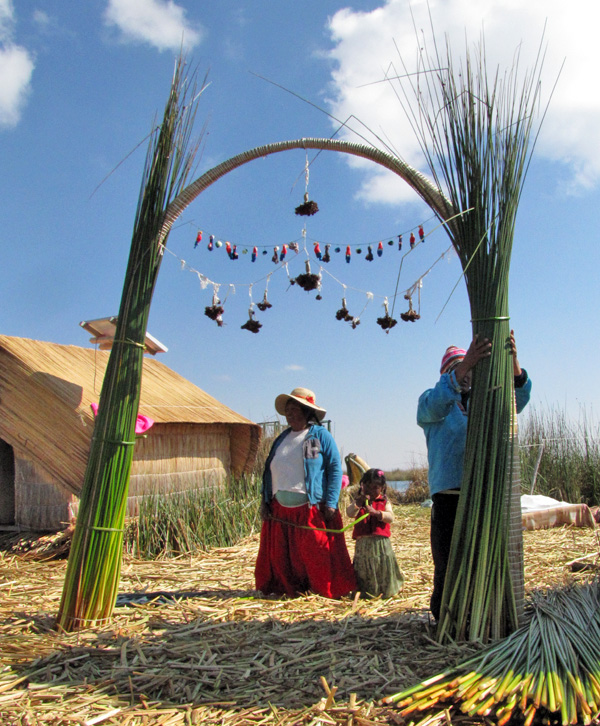
They have a cat 🙂 He tried to get on our boat.
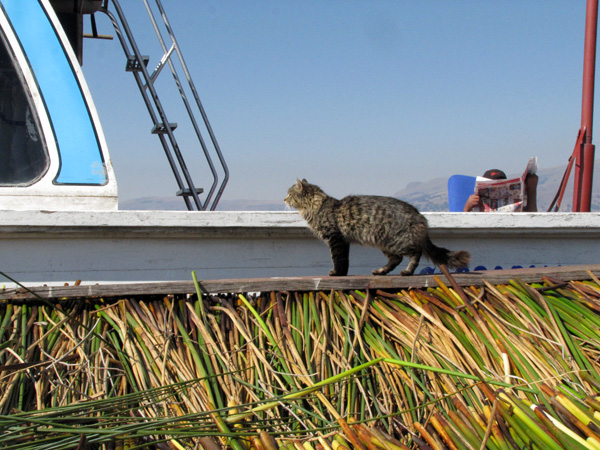
Marta showing us a tiny model of how they build an island, using peat moss as a base and adding reeds on top. New reeds must be added every few weeks.
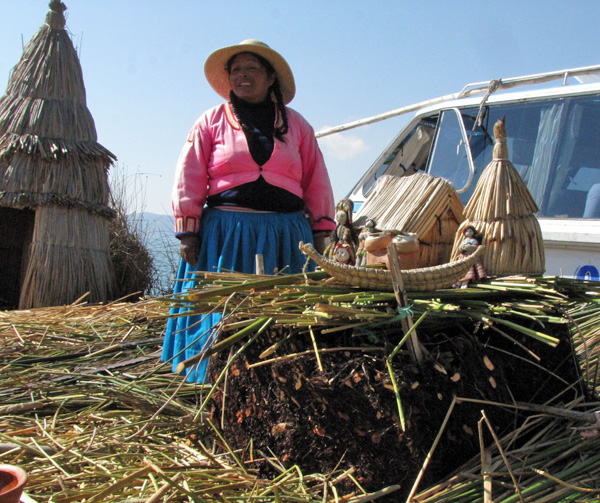
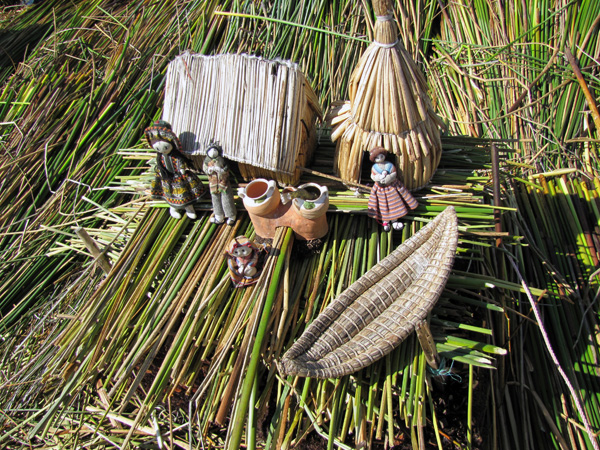
We went inside Marta’s house and she dressed mom up in traditional clothing.
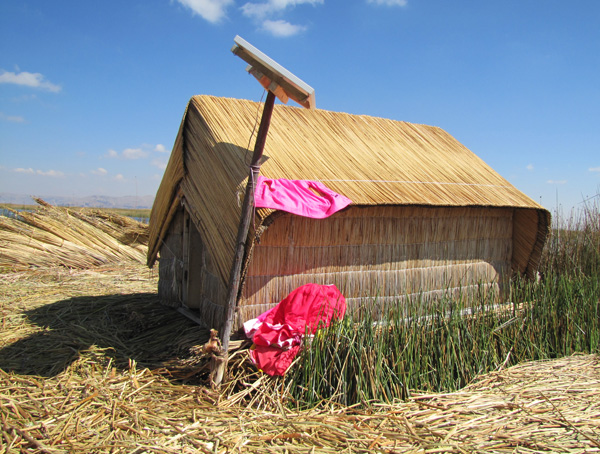
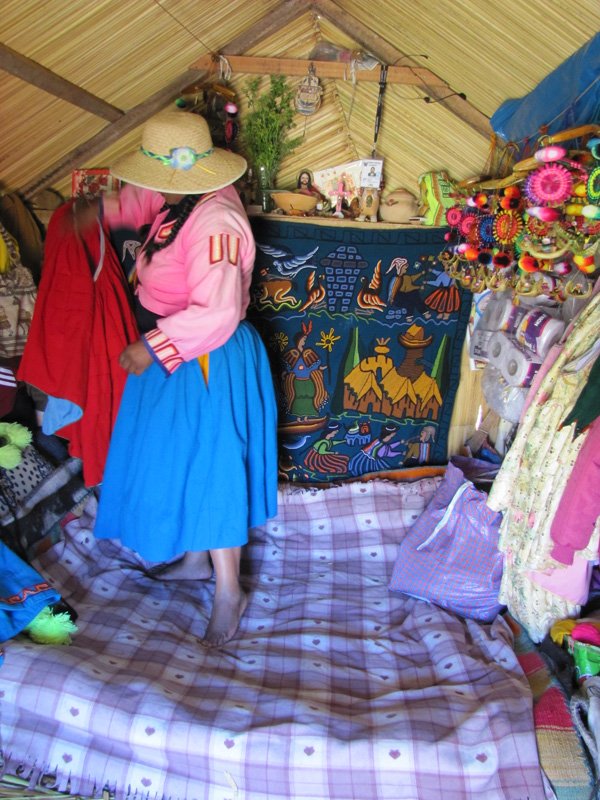
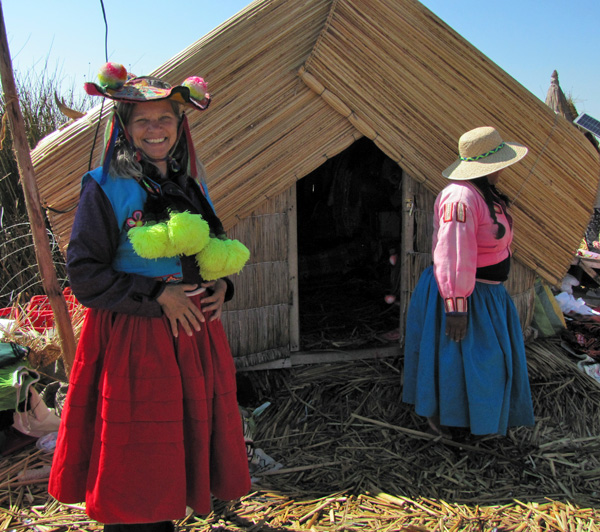
For 7 soles you can ride on the very cool reed boat.
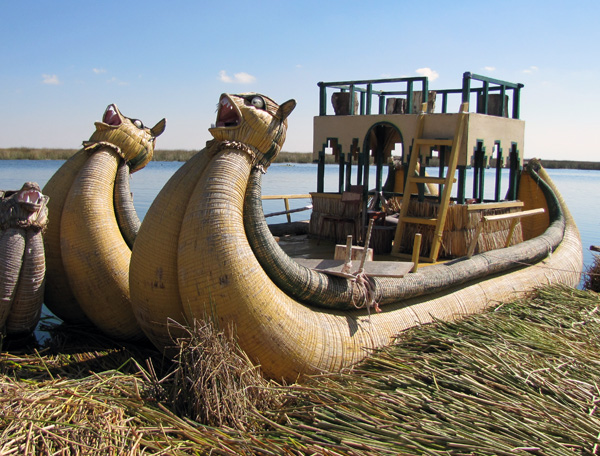
As we were taking off, the ladies surprised us with songs in Amara, Quecha, and My Bonnie Lies Over the Ocean!
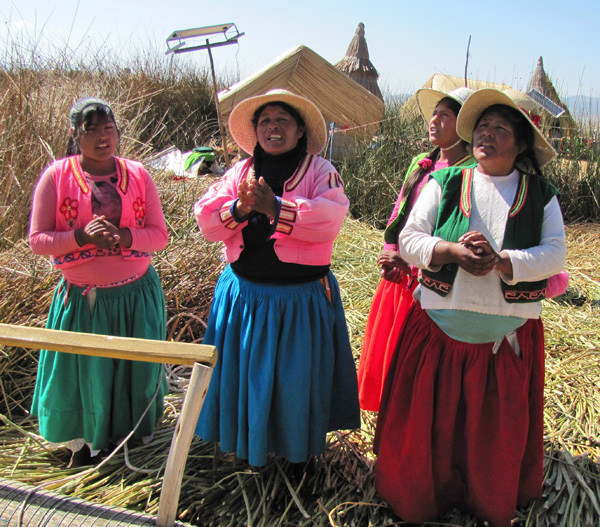
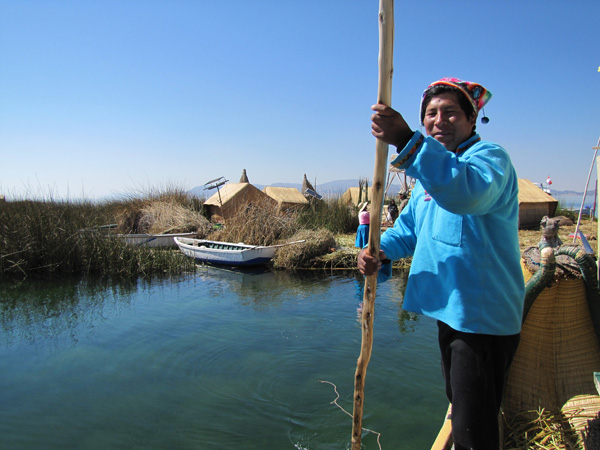
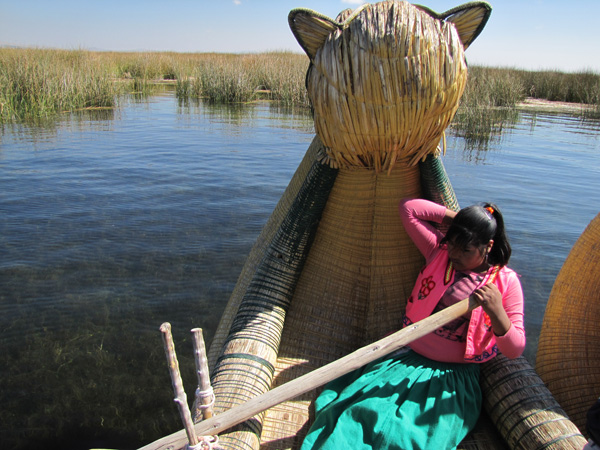
The cat came on the reed boat ride.
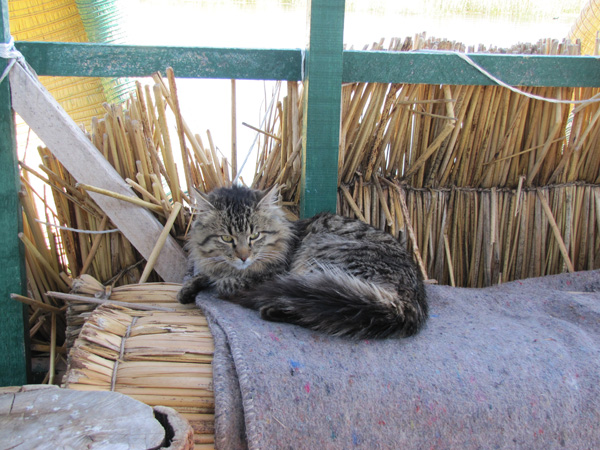
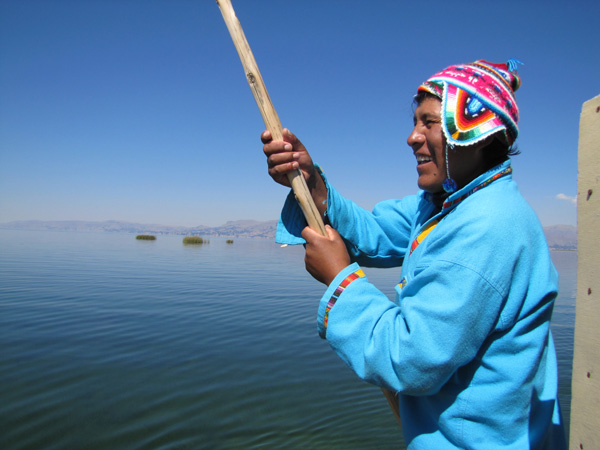
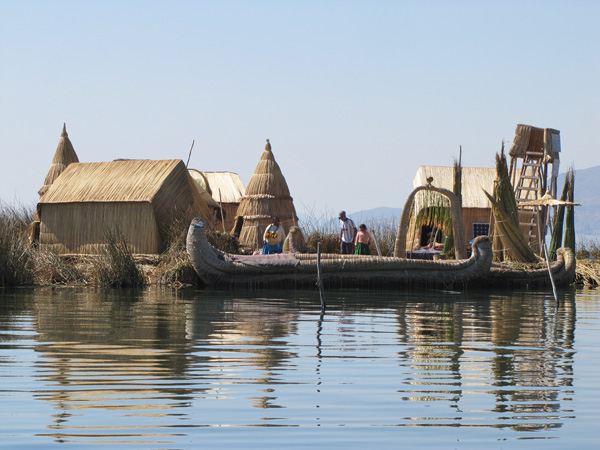
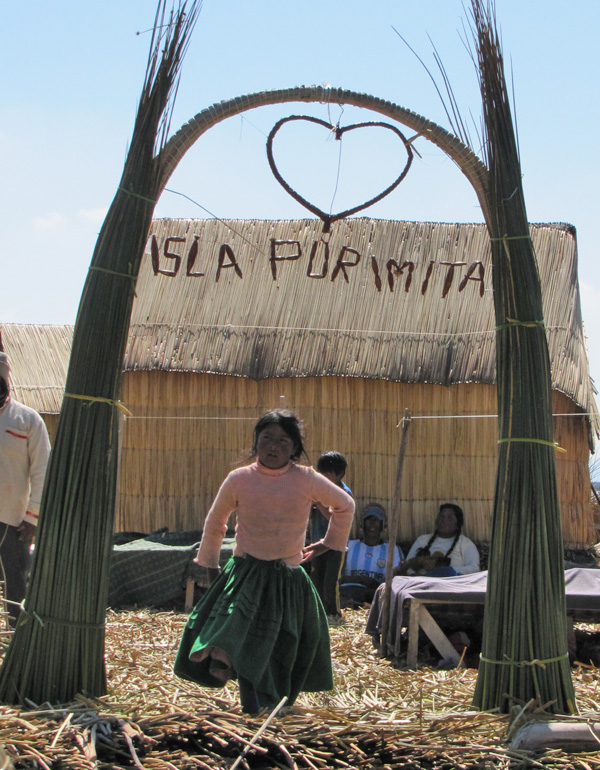
Our next stop was Taquile Island, a UNESCO World Heritage Site because of its unique cultural practices. Here, the men do all the knitting and weaving, including making clothes for their families. The women spin the yarn. We hiked for 45 minutes to the top of the island where the town center is located.
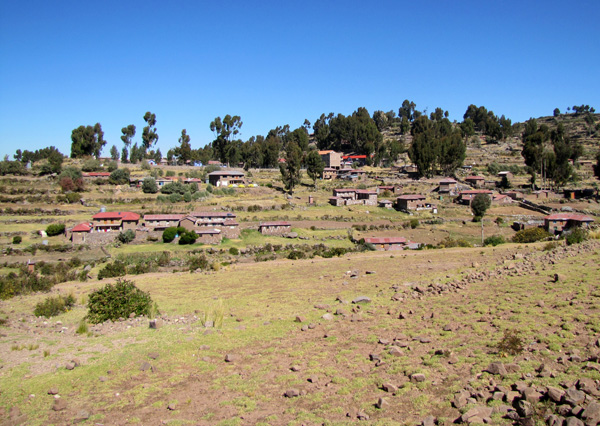
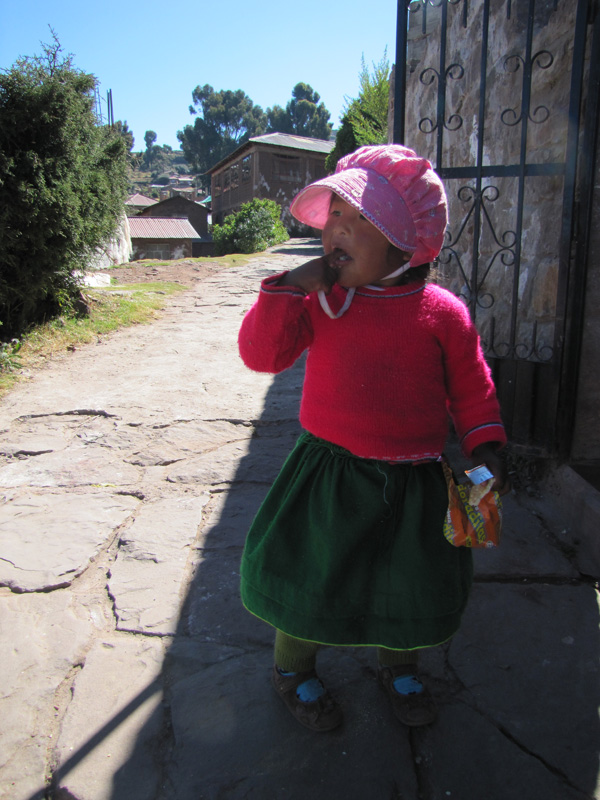
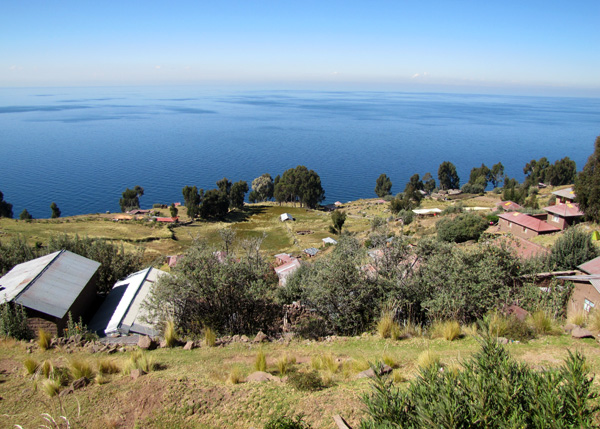
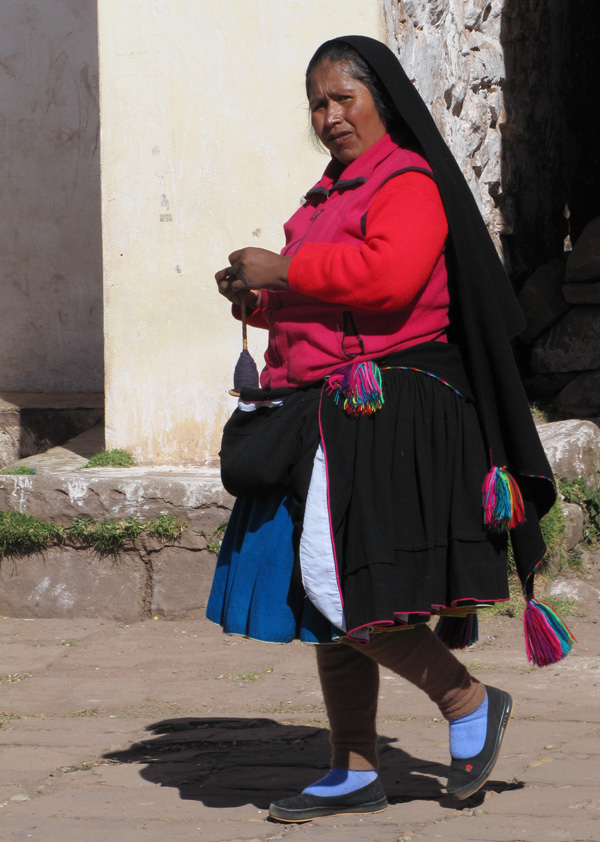
In the town center we had an excellent lunch of grilled trout with vegetables at one of the local restaurants for 25 soles. After lunch, our guide explained some of the interesting local customs to us. The type of hat a man wears signifies his status in the community. A single man wears a white hat and is considered useless, not even worth speaking to. Married men wear red hats (pictured) and a two layer belt, the inner part of which is woven from his wife’s hair, which she cuts off and gives to him when they marry. Married men also carry with them a pouch of coca leaves, which they exchange with other married men as a greeting in lieu of a handshake. Married men are the only ones who can chew coca leaves, which they do all day. Yet another kind of hat signifies that a man has been elected to serve as a community leader for a year.
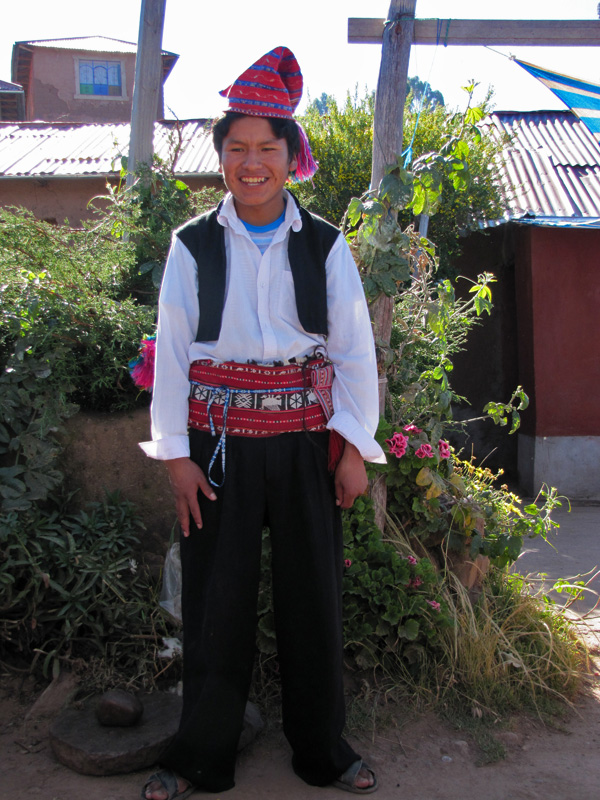
After lunch we hiked back down the island to our boat.
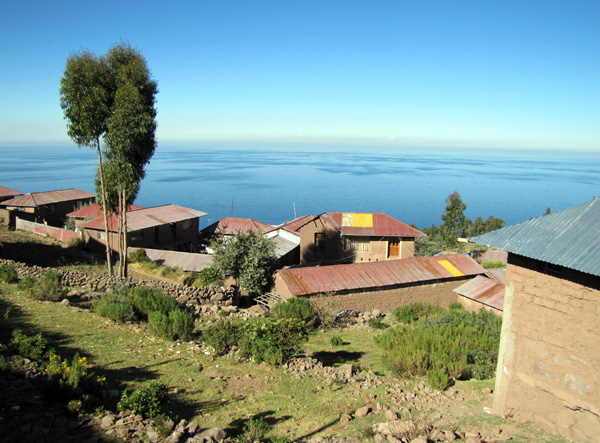
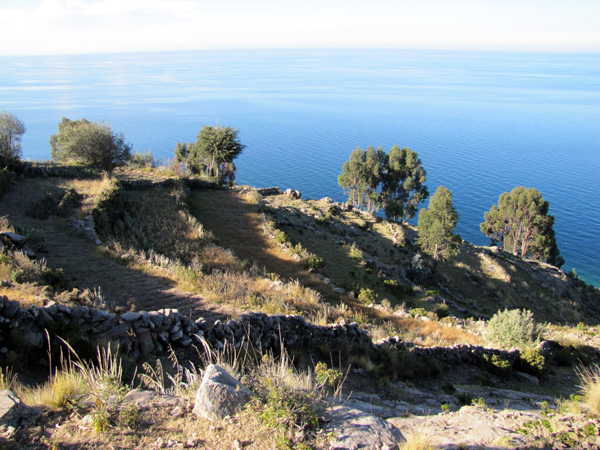
Here everything is reused. What once was a tire turned into a sandal, and then the hinges of a gate.
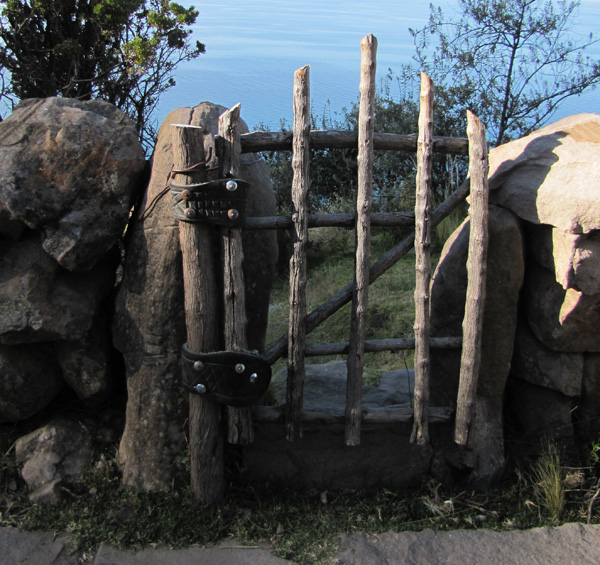
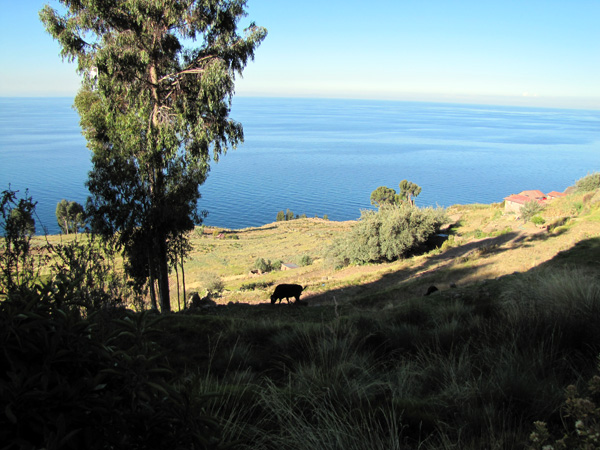
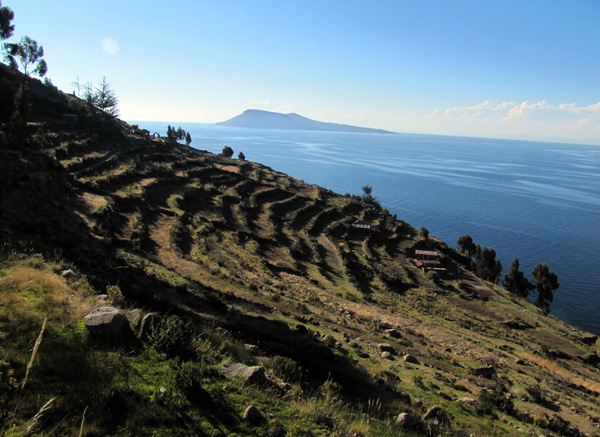
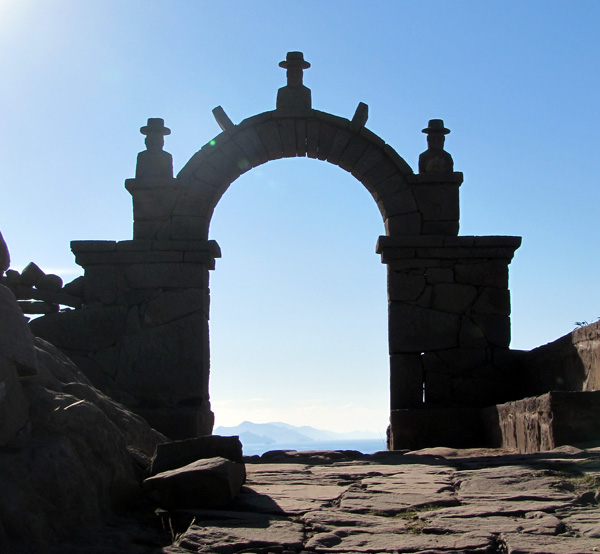
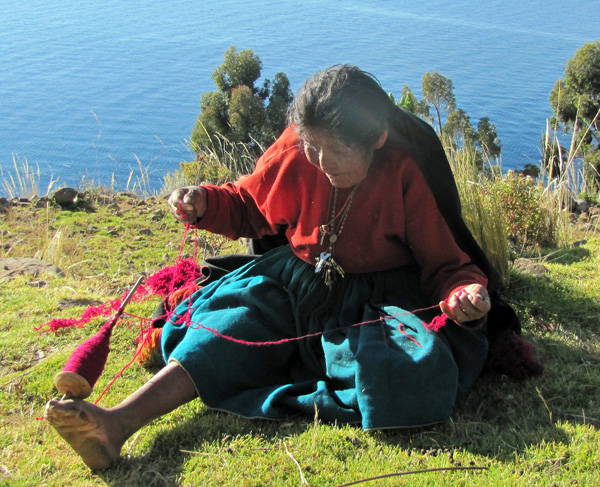
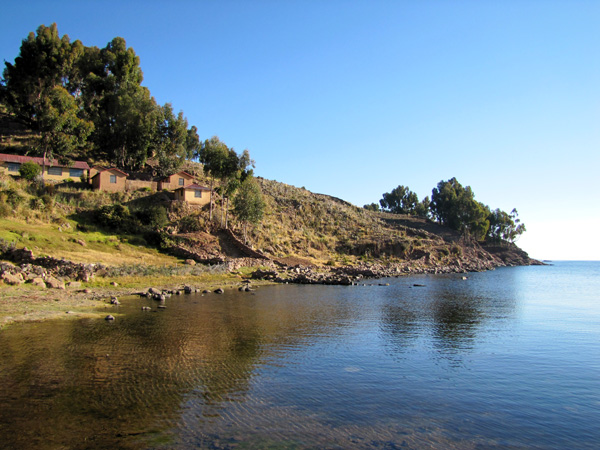
Next, we landed on a large peninsula at the village of Luquina, where we met our homestay families. About 30 families participate in the homestay program on a rotating basis, so that each family has guests twice a week.
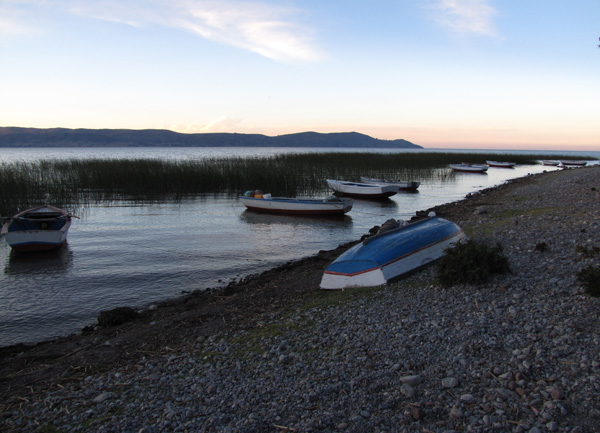
We met our homestay mother, Lula, before engaging in a soccer match with the locals. It was a tough game, we outnumbered them by at least double, and came away with a 1-1 tie. After the game we dressed up in local clothing and learned a traditional dance.
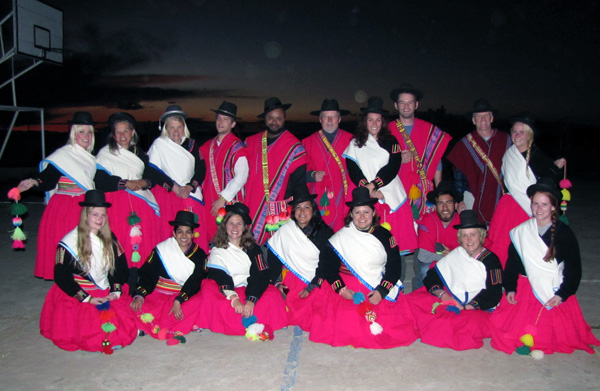
Our group then split up and we went to our individual houses. Ours was at the top of the hill, no easy walk for mom at this altitude, especially wearing all that traditional clothing. Our room at the homestay was far nicer than we expected. We had lights and a flushing toilet! We joined the family for a traditional dinner of potato, vegetable and quinoa soup, and an entree of potatoes and rice. The people here are farmers and they grow several types of potatoes, which are native to Peru.
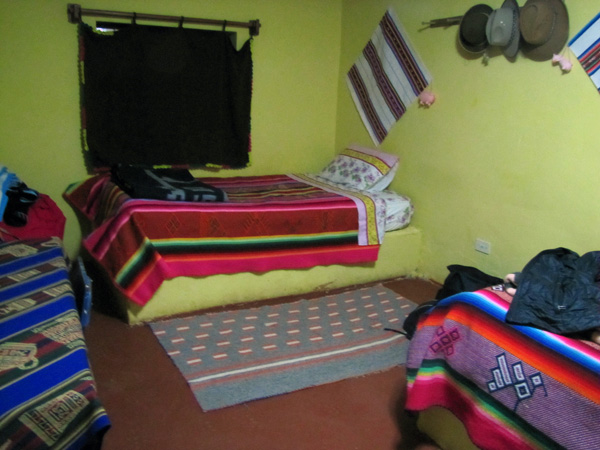
In the morning we were greeted with lovely lake views, worth the climb in the dark the previous night.
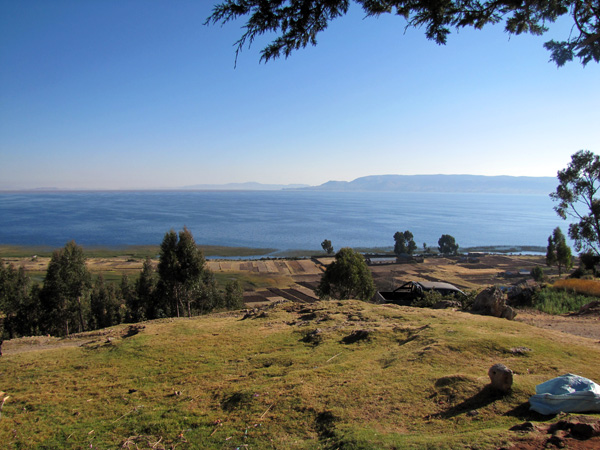
We helped Lula cook breakfast of fry bread and boiled eggs. After that we took the sheep down the hill and staked their ropes so they could graze all day. This was my favorite part 🙂
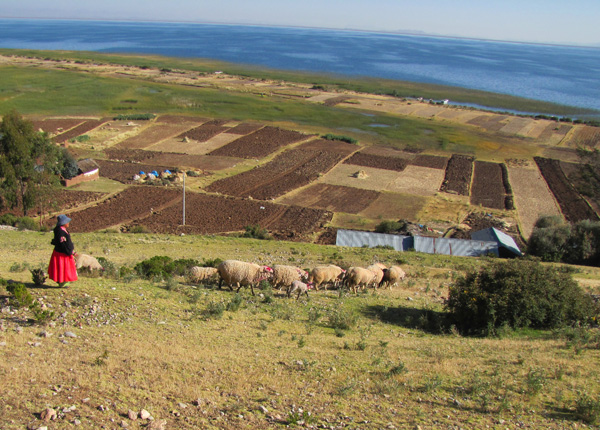
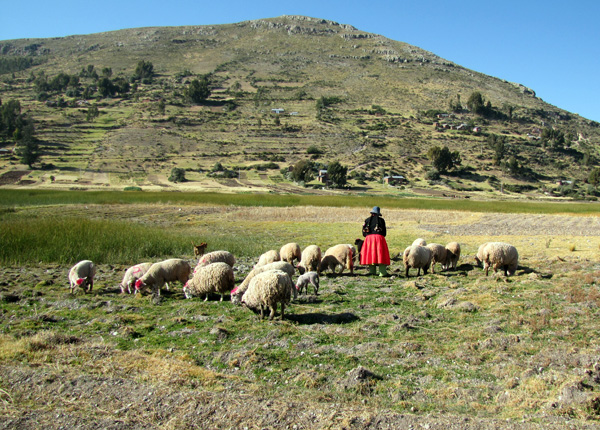
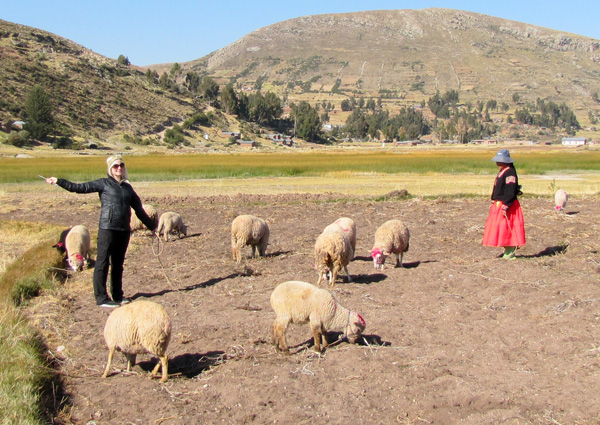
After climbing back up the hill we sat and peeled freeze dried potatoes with the rest of the family: Lula, her mother, father, aunt, and brother. The small potatoes are freeze dried naturally in the winter when the weather is below freezing. They are kept outside for several days and naturally dehydrated. After they are peeled, they are dried some more and then stored in sacks for up to 10 years.
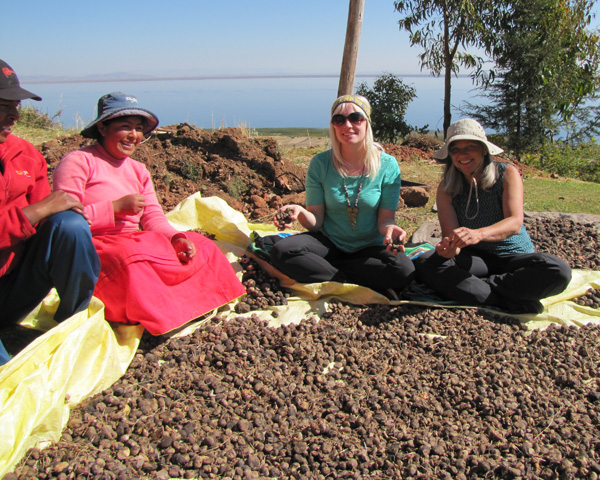
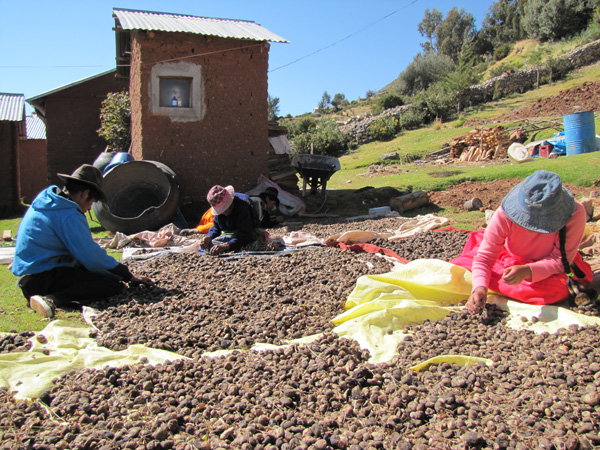
At midday we had lunch with the family, the tasty vegetable soup again along with two kinds of potatoes and fried cheese. On of the types of potatoes was the black ones we were peeling. They don’t taste good. The yellow potatoes are delicious though.
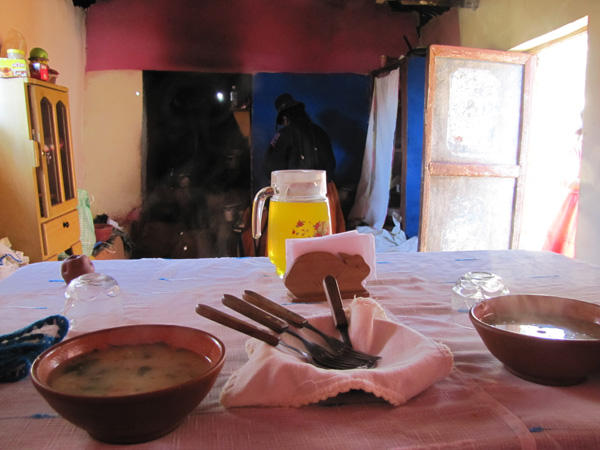
After lunch we gathered our things, thanked the family, and headed back down the hill to meet our group. Of course I had to say goodbye to one of my favorite dog buds too.
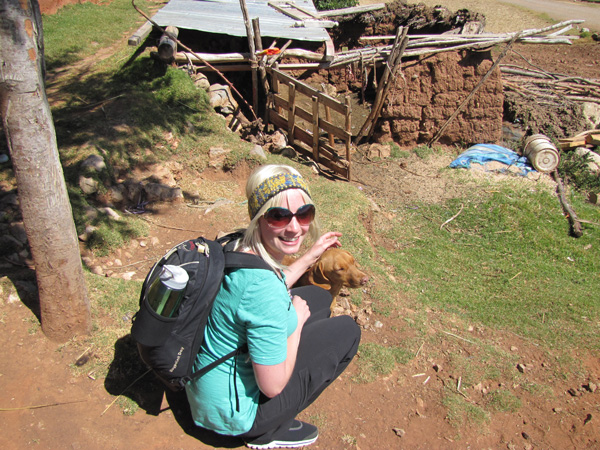
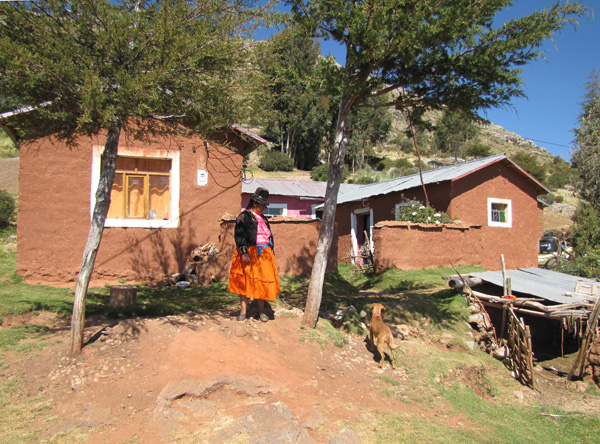
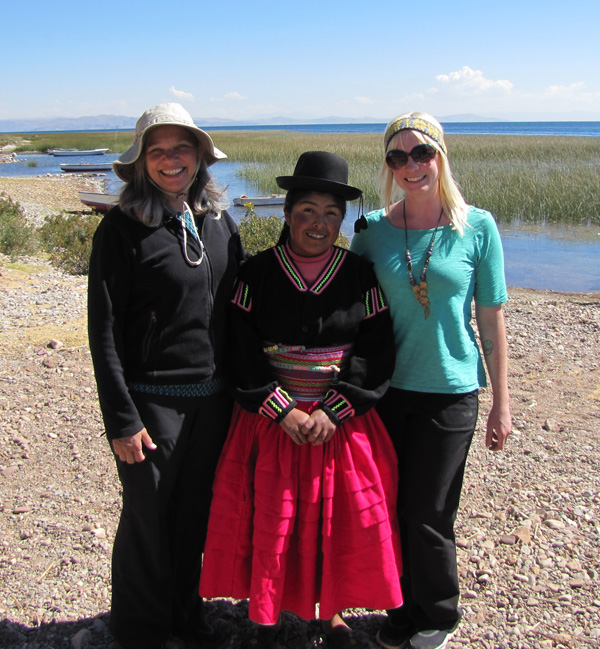
We boated back to Puno for another included night in our hotel.
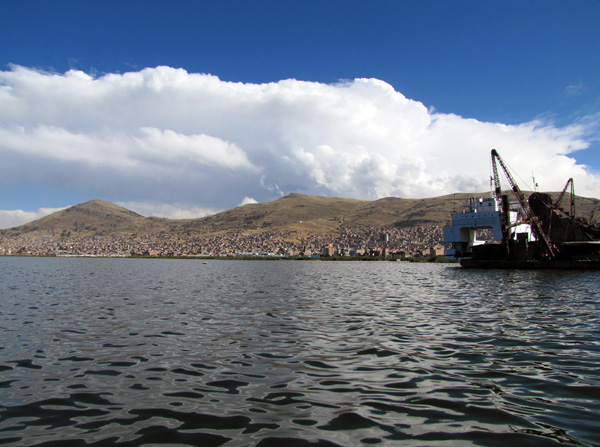
While we were coming back from dinner, we passed an extremely drunk Peruvian woman named Luz who was literally falling in the street. She was well dressed and about my age, probably had gone out after work. I didn’t want to leave her so we helped (ok, carried) her to her house about 5 blocks away. She was so wasted she asked my name about 20 times. We left her on the stairs inside her apartment building, there was clearly someone there she didn’t want to wake up, though she did offer to cook us some dinner (right….). It was pretty hilarious and I felt better leaving her behind a locked door rather than out in the street.
The next day we took the Inka Express bus back to Cusco again. Now it’s shopping time!
Thanks for sharing your experience of island hopping and Lake Titikaka, what tour company did you use for planning this part of the trip? I am hoping to find a company that will connect us to homestay families. Thanks